What Being Online Was Like for Kids in 2023
This year’s annual report shows the common issues facing kids — and how Bark helps families navigate them.
Bark’s Annual Report 2023
Every year, we analyze the rate at which children encounter problematic content and people online. This year, we processed an astounding 5.6 billion activities on family accounts across texts, email, YouTube, and 30+ apps and social media platforms.
Kids have complex digital worlds, and these activities represent late-night DMs, urgent texts with friends, and comments on countless apps — places where children communicate the most frequently. Bark’s software monitors these conversations in places where parents may not even know to look.
The percentages for each category represent the number of Bark users who were sent alerts when their child engaged with or encountered a particular subject matter.
A note from Brian Bason, Bark’s CEO
2015 feels like a lifetime ago when I started Bark, and the world has changed tremendously since then — technology, social media, and digital culture move lightning fast.
But so does Bark, and we continue to evolve to help keep kids safe online and in real life.
Looking back on 2023, I’m incredibly proud of the continued impact we have had on families and communities. Bark alerts help save lives, but they also help families grow closer, prompt hard but important conversations, and give parents invaluable insight into their children’s lives.
This year’s data shows some promising trends — serious issues like depression, suicidal ideation, and bullying are all on a downward trajectory year-over-year, which is really encouraging to see.
I suspect this stems from the country moving past the hardest years of the pandemic, when lockdown and virtual learning had detrimental effects on children’s mental health. In addition, it shows that parents are becoming more engaged in their kids’ online worlds, something that every child deserves.
Disordered eating, on the other hand, is on the rise, which indicates a need for more education and more support for families.
There will always be new online safety issues to tackle, and Bark will continue to evolve to meet the needs of families when it comes to online safety.
 Brian BasonCEO, Bark
Brian BasonCEO, Bark
Bullying
Alerts for bullying range from mean-spirited teasing to hateful threats and provoking statements.
Experienced by:
-
67%
of tweens
-
76%
of teens
Sample alert:

Bullying can happen anywhere, at any time — day or night. More than just teasing, it can lead to anxiety, depression, and even suicidal ideation.
Resources for families:
Depression
Alerts for mental health range from mild pessimism to talking about or planning to attempt suicide.
Experienced by:
-
26%
of tweens
-
38%
of teens
Sample alert:

America’s emergency departments are being flooded by children suffering from psychiatric emergencies like depression, anxiety, and suicidal thoughts. —U.S. News & World Report
Need help? Check out these blog posts:
Online Predators
Alerts for predators are sent when a conversation is sexual in nature and there’s a confirmed age difference.
Experienced by:
-
8%
of tweens
-
10%
of teens
Sample alert:
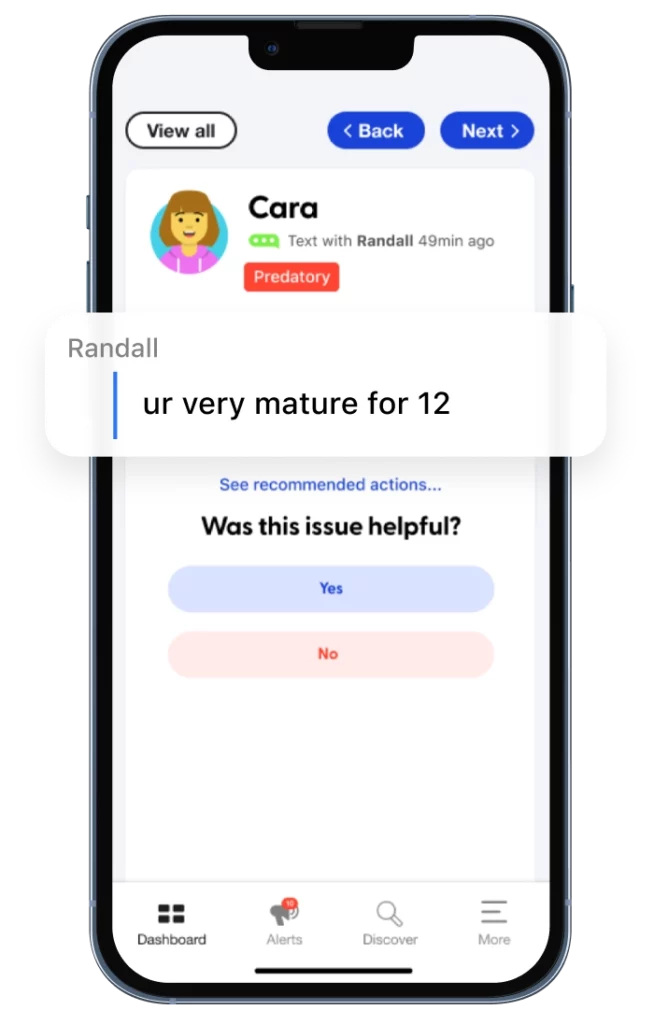
It takes only 8 minutes for a predator to bond with a child. —International Centre for Missing & Exploited Children
Help keep your kids safe:
Drugs/Alcohol
Alerts for drugs and alcohol can range from texts about prescriptions to videos of a child consuming illegal substances.
Experienced by:
-
58%
of tweens
-
77%
of teens
Sample alert:

10% of high school students and 4.6% middle school students reported current use of e-cigarettes.
Find out more:
Suicidal Ideation
Alerts for potential self-harm and suicide include anything from text messages about cutting to an email draft of a suicide note.
Experienced by:
-
33%
of tweens
-
57%
of teens
Sample alert:
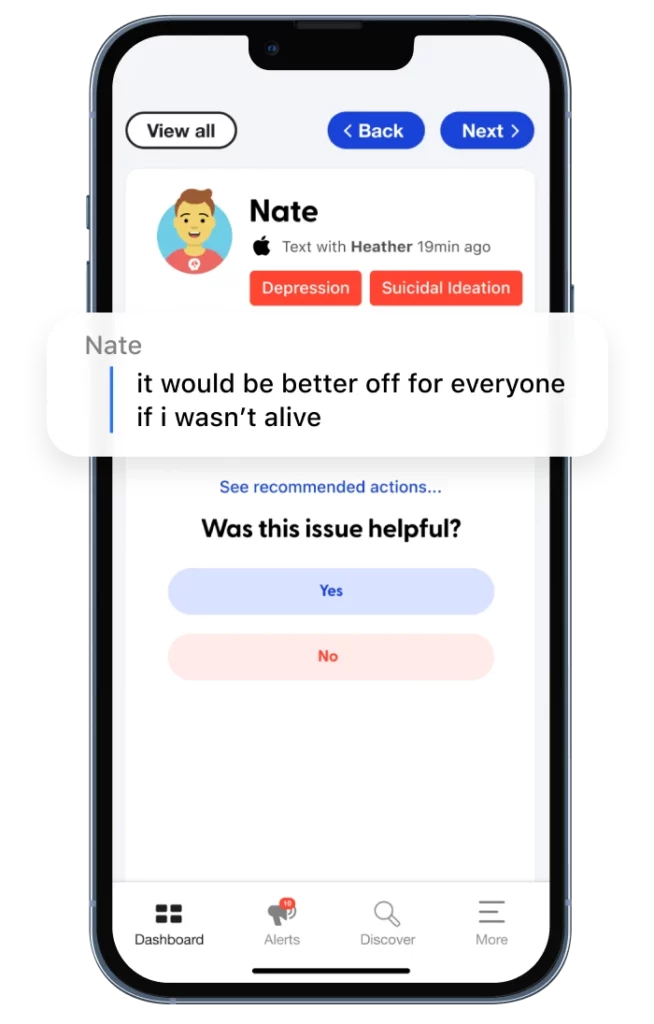
Suicide is the second-leading cause of death for kids ages 10–14. —CDC
How to get support:
Sexual Content
Alerts for sexual content can be anything from web searches for explicit content to a child receiving nude photos.
Experienced by:
-
58%
of tweens
-
75%
of teens
Sample alert:
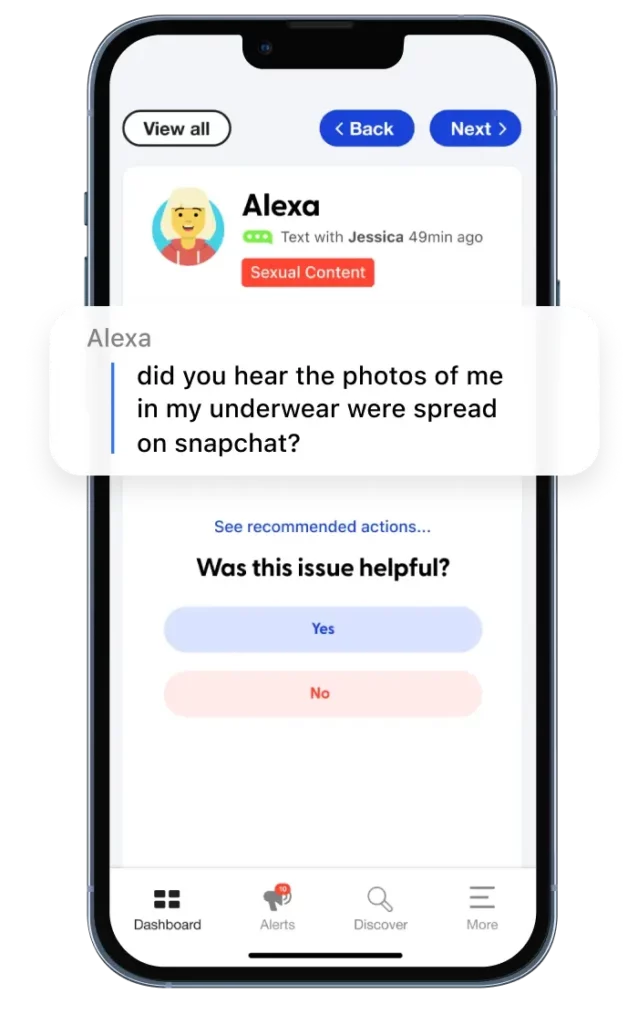
In a survey conducted by Common Sense Media, 15% of teens stated they saw pornography for the first time before they turned 11.
Ways to learn more:
Disordered Eating
Alerts for disordered eating range from mentions of dangerous dieting practices all the way to discussions of anorexia, bulimia, and body dysmorphia.
Experienced by:
-
9%
of tweens
-
21%
of teens
Sample alert:
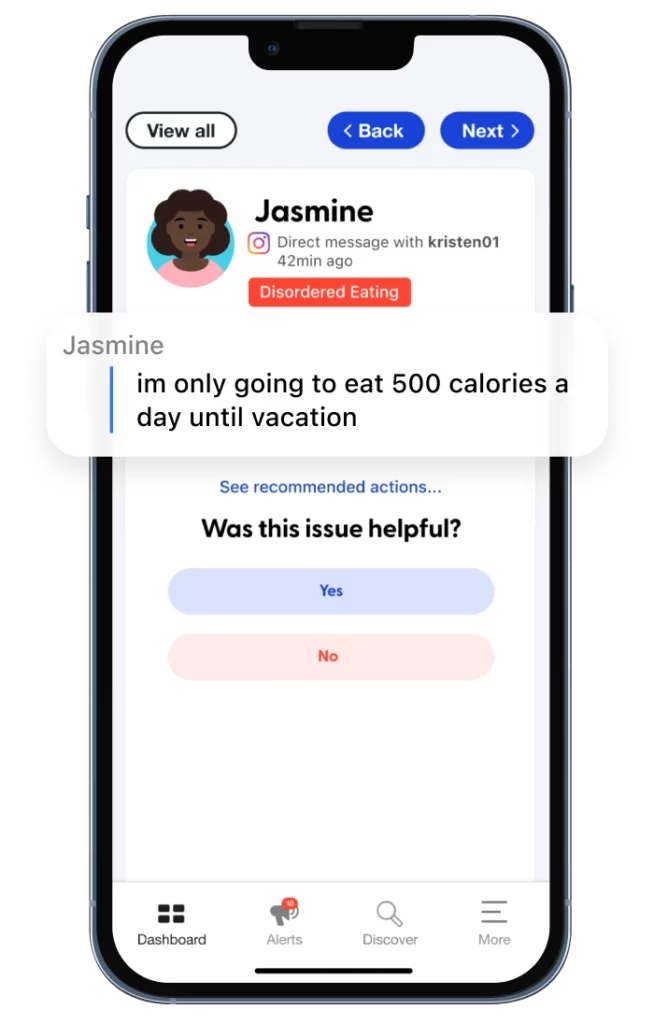
More than 1 in 5 kids and adolescents around the world show signs of disordered eating. —CNN
Check out these resources:
Anxiety
Alerts for anxiety are sent when kids discuss having anxiety or mention feeling anxious consistently.
Experienced by:
-
19%
of tweens
-
36%
of teens
Sample alert:
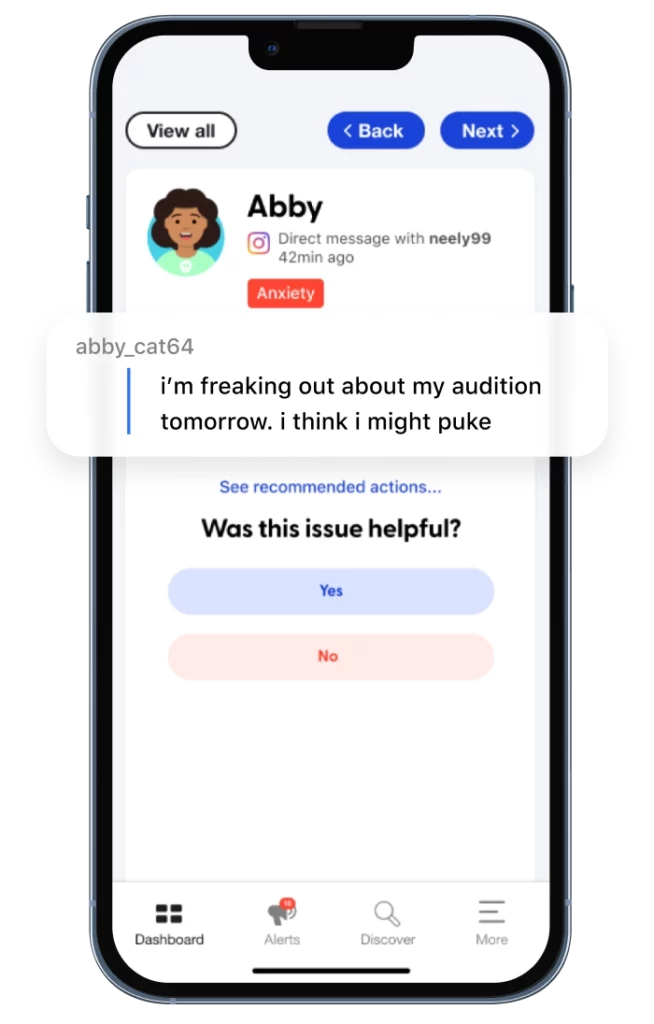
Adolescents who spent more than 3 hours per day on social media faced double the risk of experiencing poor mental health outcomes including symptoms of anxiety and depression. —U.S. Surgeon General’s 2023 Advisory on Social Media and Youth Mental Health
How to understand this issue in greater detail:
Violence
Alerts for violence range from graphic action in video games to direct threats against a child.
Experienced by:
-
68%
of tweens
-
82%
of teens
Sample alert:

There were 345 school shootings on K-12 school grounds in 2023. —Riedman, David (2023). K-12 School Shooting Database.
Tips and tricks for limiting violent content:
The most dangerous apps
Not all apps are created equal. These platforms are where we find the most issues for families.
Top apps flagged for
Severe sexual content
1. Kik 2. X 3. Reddit 4. Instagram 5. Tumblr
Top apps flagged for
Severe suicidal ideation
1. Instagram 2. Snapchat 3. Discord 4. Reddit 5. TikTok
Top apps flagged for
Depression
1. Instagram 2. Snapchat 3. Steam 4. Discord 5. TikTok
Top apps flagged for
Body image concerns
1. Instagram 2. Snapchat 3. Kik 4. Reddit 5. TikTok
Top apps flagged for
Severe bullying
1. Kik 2. Snapchat 3. Instagram 4. Discord 5. TikTok
Top apps flagged for
Hate speech
1. Spotify 2. Instagram 3. Snapchat 4. Kik 5. Tumblr
Top apps flagged for
Severe violence
These stats are more than just numbers — they’re children...


